Reviews
Gunther von Fritsch & Robert Wise
USA, 1944
Credits
Review by Victoria Large
Posted on 14 May 2012
Source Warner bros. DVD
Categories Favorites: Transformations
I discovered The Curse of the Cat People via a late night public television broadcast. I tuned in on the 13” black-and-white TV that I kept in my bedroom as teenager, and while I’m sure the film’s shadowy fairy tale visuals are best appreciated on the big screen, my first encounter with the film was perfect in its own way. It allowed this exceedingly odd picture to come into my life very nearly like a dream, which made complete sense given its preoccupation with daydreams, nightmares, and the world of fantasy.
The first thing that most reviewers mention about The Curse of the Cat People, probably rightly so, is that nobody actually turns into a cat in this film, despite the fact that it’s a sequel to the 1942 Jacques Tourneur hit that saw Simone Simon transform into a deadly black panther. While Tourneur’s Cat People is frequently read as an anxious, thinly veiled tale of female sexuality and desire, The Curse of the Cat People’s focus is on childhood, and more specifically, the kind of terror and loneliness that is rarely associated with childhood in Hollywood films.
So while this sequel sees Simone Simon, Kent Smith, and Jane Randolph reprising their roles from Tourneur’s film, the real star is child actress Ann Carter, who plays a sad little girl named Emily. Emily’s parents are Smith’s character Ollie Reed, who loved and lost Simon’s doomed cat person Irena in the first film, and his new wife Alice, who in the last picture almost fell victim to Irena’s wrath. Ollie harbors a persistent fear that Emily, a child given to daydreams, with a rich inner life and few real friends, will eventually be destroyed by her own fantasies, which is what he believes happened to Irena. “Amy has too many fancies and too few friends, and it worries me. It doesn’t seem normal,” Ollie says early on. Shortly thereafter he confesses that he resents “something moody, something sickly” that he senses in his daughter, intoning, “She could almost be Irena’s child.”
Needless to say, Ollie makes himself and his daughter miserable with his fears. Indeed, one can imagine Amy coming to believe that her father’s love is conditional. “You see, when you’re a good girl and play with the other children and don’t go moping and dreaming by yourself, your daddy wants to do everything he can to make you happy,” Ollie says, implying that he might withdraw his affection and attention if Amy continues…well, continues being herself.
Amy’s mother Alice isn’t much better: though she occasionally challenges Ollie’s harshness with Amy, her character has some defining hands-off moments. In one startling instance, she continues playing a game of cards after hearing her daughter call out in the night, deciding that she imagined it. (She didn’t.) With unsympathetic parents and no friends her own age to confide in, affection-starved Amy eventually turns to two strange allies: her neighbor Mrs. Farran, a witchy old actress who gives Amy nightmares by telling ghost stories, but who at least doesn’t scold the little girl for dreaming, and Irena, who Amy is able summon either as (depending on how you read the film) a guardian angel or an imaginary friend.
Irena’s transformation in this film, then, is not the expected shift from human to beast, but rather a change from a supernatural menace to a supernatural(?) comfort. (On a commentary track recorded for the DVD, film historian Greg Mank aptly notes that the opening titles include an illustration of a cat with angel wings, a fanciful representation of Irena.) Through Amy’s eyes, Irena becomes the perfect childhood friend: a fairy princess, playmate, and caregiver rolled into one. In that scene where Amy calls out, awaken by a nightmare, and Alice shrugs the noise off instead of checking on her daughter, it’s Irena who sings Amy to sleep. That’s kind of the melancholy heart of the film right there: a rejected child turns to a dreamed-up dead woman; or to read it another way, to her imagination - herself - for help.
Interviews indicate that for her part, Simone Simon was bored with playing the new, nicer Irena, and an argument could be made that seeing Irena go from a tormented, threatening, and sexual woman to an angelic, maternal figure in a sparkly dress is a step in a more conservative direction from the last film. But I would argue that Irena’s real or imagined redemption in The Curse of the Cat People, curveball that it is, is not an entirely conservative move. There’s a wonderful irony in the fact that Irena, by many standards a monster, and certainly a killer, emerges as the sympathetic friend that Amy needs, and Irena’s assertion that she comes from “great darkness and deep peace” at least suggests a not-so-tortured afterlife for the character. There’s something to be said for this little twist: since Irena is not cast as a vengeful or corrupting ghost; neither Amy nor the film imagines her as an intrinsically evil being.
Of course, with Irena acting so nice and Amy’s parents being more misguided than wicked, someone in the film has to be truly menacing. Curse is full of psychically scarred characters, but it’s not strong on building straightforward conflict. It does ultimately conjure up a glowering Elizabeth Russell as Barbara Farren, the shunned daughter of Amy’s eccentric actress friend Mrs. Farran. Like Amy, Barbara is rejected by a parent: the seemingly senile Mrs. Farren insists that Barbara is “an impostor” and that her real daughter died at age six. The strain of this rejection eventually begins to drive Barbara mad, setting up the film’s effectively eerie conclusion while also implying that Ollie’s harsh treatment of his daughter could give rise to its own fearsome transformation.
Yet even with its few concessions to being a conventional horror picture, it’s clear that producer Val Lewton, known for hits like I Walked with a Zombie, did not give the studio what they expected or wanted with this curious and introspective little feature. By that measure it’s easy to understand why The Curse of the Cat People disappointed the RKO front office in 1944, and why it still has its share of detractors now. The film’s unhurried pace and unexpected direction make for a tough sell, especially with a title like that, one that makes the whole production feel like a bait-and-switch. (It’s often reported that Lewton preferred the title Amy and Her Friend.)
Still, for lovers of unusual cinema, this strange little sequel feels like a find. It’s a haunting story, as sad as it is sweet (maybe sadder). Directors Gunther von Fritsch and Robert Wise (the latter took over when the former was fired for moving too slowly) imbue it with an appropriately ethereal look, and Carter gives a truly affecting performance as the dreamy and downcast Amy. The emotions that run beneath the surface of this film have real power, and perhaps it stands to reason that The Curse of the Cat People has a coterie of admirers among serious movie buffs, those who may well know the value of taking solace in a fantasy world.
More Favorites: Transformations
-
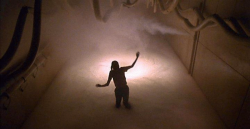
Altered States
1980 -
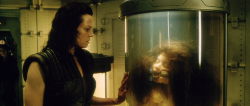
Alien: Resurrection
1997 -
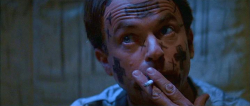
In the Mouth of Madness
1994 -
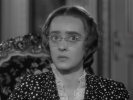
Now, Voyager
1942 -

Honey, I Shrunk the Kids
1989 -

The Toxic Avenger
1984 -
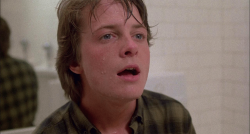
Teen Wolf
1985 -

Teen Wolf Too
1987 -

An American Werewolf in London
1981 -
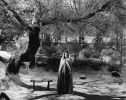
The Curse of the Cat People
1944 -

Face/Off
1997 -

That Obscure Object of Desire
1977 -

Now, Voyager
1942 -
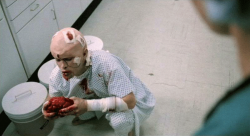
From Beyond
1986 -
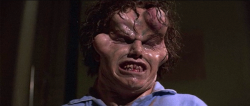
The Beast Within
1982 -
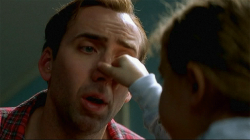
The Family Man
2000 -
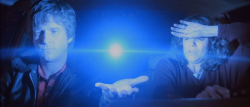
Starman
1984
We don’t do comments anymore, but you may contact us here or find us on Twitter or Facebook.



